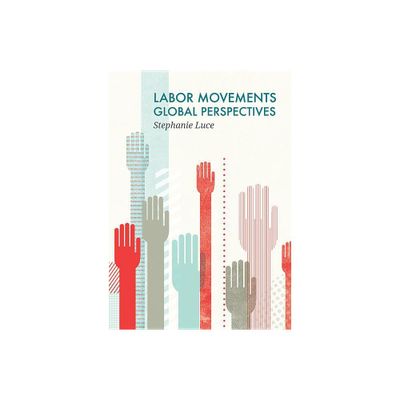Home
City of Workers, Struggle: How Labor Movements Changed New York
Loading Inventory...
Barnes and Noble
City of Workers, Struggle: How Labor Movements Changed New York
Current price: $40.00


Barnes and Noble
City of Workers, Struggle: How Labor Movements Changed New York
Current price: $40.00
Loading Inventory...
Size: Hardcover
*Product Information may vary - to confirm product availability, pricing, and additional information please contact Barnes and Noble
From the founding of New Amsterdam until today, working people have helped create and re-create the City of New York through their struggles. Starting with artisans and slaves in colonial New York and ranging all the way to twenty-first-century gig-economy workers, this book tells the story of New York’s labor history anew.
City of Workers, City of Struggle
brings together essays by leading historians of New York and a wealth of illustrations, offering rich descriptions of work, daily life, and political struggle. It recounts how workers have developed formal and informal groups not only to advance their own interests but also to pursue a vision of what the city should be like and whom it should be for. The book goes beyond the largely white, male wage workers in mainstream labor organizations who have dominated the history of labor movements to look at enslaved people, indentured servants, domestic workers, sex workers, day laborers, and others who have had to fight not only their masters and employers but also labor groups that often excluded them. Through their stories—how they fought for inclusion or developed their own ways to advance—it recenters labor history for contemporary struggles.
offers the definitive account of the four-hundred-year history of efforts by New York workers to improve their lives and their communities.
In association with the exhibition
City of Workers, City of Struggle: How Labor
Movements Changed New York
at the Museum of the City of New York
City of Workers, City of Struggle
brings together essays by leading historians of New York and a wealth of illustrations, offering rich descriptions of work, daily life, and political struggle. It recounts how workers have developed formal and informal groups not only to advance their own interests but also to pursue a vision of what the city should be like and whom it should be for. The book goes beyond the largely white, male wage workers in mainstream labor organizations who have dominated the history of labor movements to look at enslaved people, indentured servants, domestic workers, sex workers, day laborers, and others who have had to fight not only their masters and employers but also labor groups that often excluded them. Through their stories—how they fought for inclusion or developed their own ways to advance—it recenters labor history for contemporary struggles.
offers the definitive account of the four-hundred-year history of efforts by New York workers to improve their lives and their communities.
In association with the exhibition
City of Workers, City of Struggle: How Labor
Movements Changed New York
at the Museum of the City of New York


















